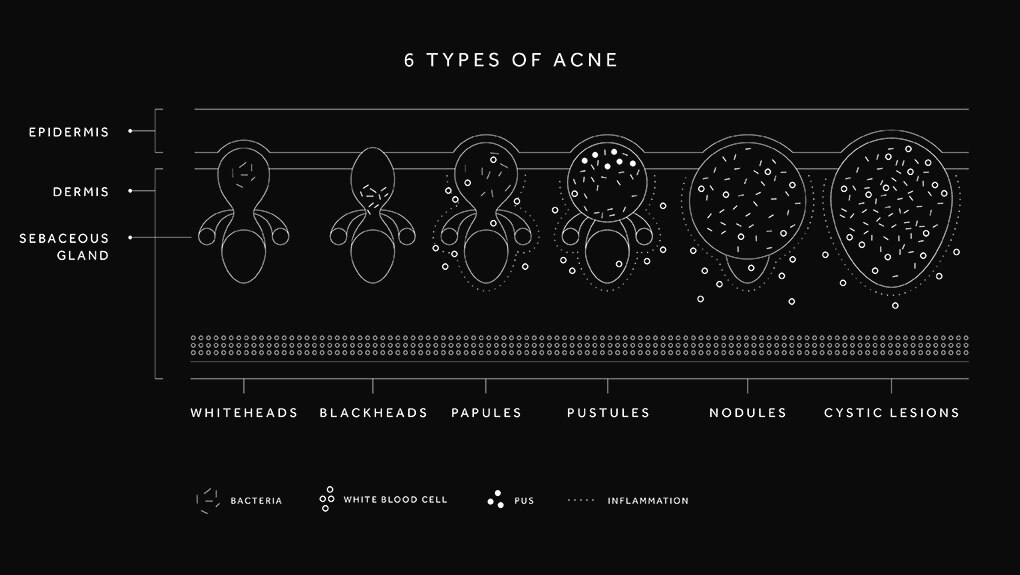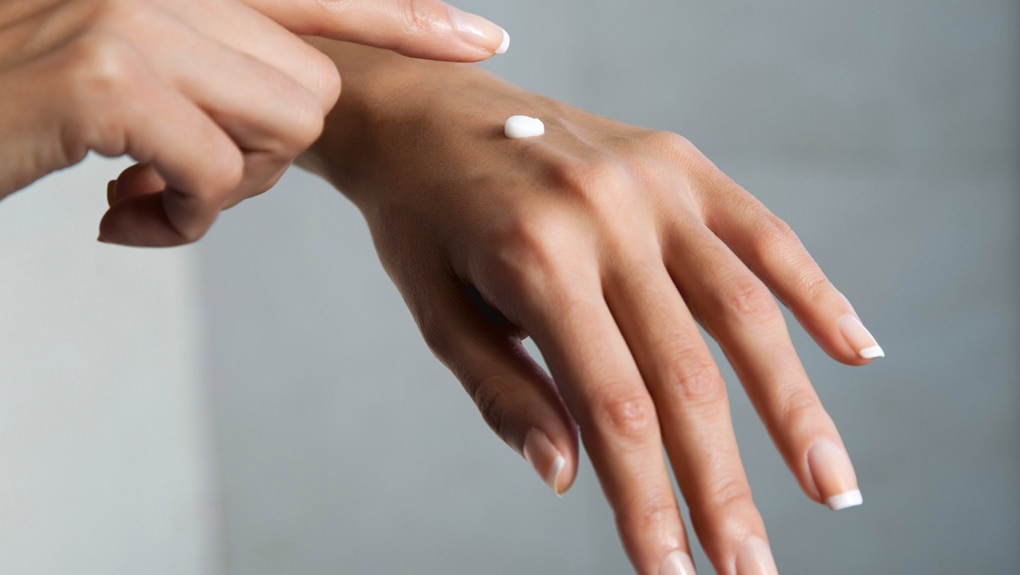Now hang on, how many types of acne are there?
There isn’t just one type of acne — there are six.
In Pimples

Truth: not all acne look the same. Just because you’re not battling with angry, red, pus-filled inflammations doesn’t mean your skin is acne-free. Everyone experiences some form of acne, especially when they haven’t been particularly diligent about their cleansing routines.
Those whiteheads and blackheads that therapists help you squeeze out when you pop in for a facial? Yes, they’re considered acne too. Just a very mild version of it, which could then lead to worse versions of it down the road.
Here are the six types of acne you need to know now.
Whiteheads
A combination of sebum and dead skin cells that build up in closed pores.
Blackheads
Whiteheads that oxidize and turn blackish when they react to outside air.
Papules
Small, red bumps that are tender to touch and can get as big as 1cm across.
Pustules
Infected papules with pus at their tips. May appear as red bumps with white or yellow tips.
Nodules
Inflamed lumps beneath your skin surface. Caused when bacteria enter pores of blackheads.
Cystic Lesions
Pus-filled lumps beneath your skin surface. Red, swollen and painful. Caused by bacteria.
So how do we fix this?
There are three essential skincare ingredients to help you get rid of these blemishes, no matter what form it takes: salicylic acid, a tried-and-tested ingredient to cleanse and exfoliate skin, herbal clay to calm inflammations and scrub beads to slough away dead skin cells to ensure pores do not become more clogged.





